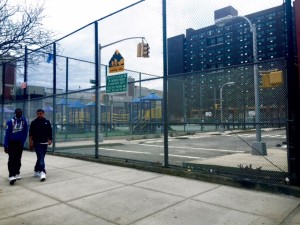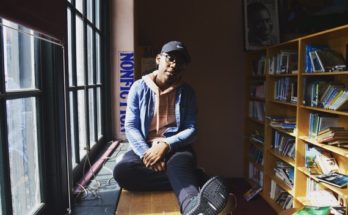
In that final push of late night college study sessions, high school may seem like ancient history. But Bryn Mawr Freshman Anita Ntem has hardly forgotten her alma mater. And Democracy Preparatory Charter School in Harlem hasn’t forgotten Ntem, either. Every week or so, a high school counselor or alumni contact nudges her in some little way: through a text message reminder about financial aid forms, by helping out cover textbook costs or calling just to ask, how are things going?
Large charter networks like Democracy Preparatory and Knowledge is Power Program are making “through college” both the motto and cornerstone of their mission, tracking alumni closely to provide them with ongoing moral and financial support. These charters are beginning to foster relationships with universities, in order to identify promising applicants and build strong networks of alums in their selected schools.
These practices aren’t new; nor are they limited to charter schools. Nonprofit organizations like the Posse Foundation and SEO Scholars (Sponsors for Educational Opportunity) that support minority and low-income public school students traditionally overlooked by the college process, have been doing so for years. The Posse Foundation has been following its students through college since the mid-2000s; SEO Scholars has been doing so since the organization was founded in 1963. That’s about when charter schools like Democracy Preparatory and KIPP began their efforts. At these extensive charter networks, supporting alumni through college has become the expectation rather than the exception.
The idea is that minority, low-income students like Ntem who may also be the first in their families to go to college might face greater challenges adjusting to and persisting in college than their more affluent classmates. Low-income students are not only less likely to graduate college; they are less likely to apply in the first place, Caroline Hoxby and Christopher Avery found in their study for the Brookings Institute. Only 27 percent of first-generation students graduate college in four years, compared to 42 percent of students whose parents have college degrees, according to a 2011 study by the Higher Education Research Institute.
There are many reasons why a student might drop out of college besides challenging academics. According to John Panzica of College Source, “it’s the social environment, it’s the actual environment.” Frequently, that social environment in college can be difficult to navigate, as students come in contact with peers from different backgrounds and at varying levels of college preparation. Students don’t always find the perfect fit at their college, according to Robert Pondiscio, Senior Fellow at the Thomas B. Fordham Institute, a non-profit think tank on educational policy.
Universities often lack the infrastructure to adequately support low-income, first-generation college students. “The issues they have all their lives don’t just disappear because they’re going to college,” said Ays Necioglu, Vice President of SEO Scholars, College.“The challenges are vast in terms of personal adjustment they have to make to manage school and their lives.”
For students like Anita Ntem, a high school’s support can mean the difference between graduating college and dropping out. Bryn Mawr may be only a couple hours’ drive from Harlem, where Ntem grew up, but the small, all-female, mostly white liberal arts college can seem like it is worlds away.
Ntem is midway through spring semester of her freshman year, which is farther than most students in her demographic—99 percent Black and Latino, 85 percent from economically disadvantaged households—attain. Ntem’s family may not be at the extreme end of the spectrum in a neighborhood where 35 percent of residents live below the poverty line compared with a 21 percent citywide average, but she is still an outlier at Bryn Mawr, where Blacks and Latinos make up less than 15 percent of the student body.
Statistically speaking, Anita Ntem is already a success story. Her alma mater, Democracy Preparatory, won’t be satisfied until Ntem walks up to the podium on Bryn Mawr’s grass lawn to receive her diploma.
Ntem is also a first-generation college student, though her brother, who is a year older, was the first in her family to enroll. Ntem’s brother graduated High School for Media and Communications, a public school in Inwood and now attends New York City College of Technology, which offers both associate and baccalaureate degrees. Unlike him, Ntem longed to get away from the city. “I’m a nature kind of girl, so I was immediately attracted to the setting,” Ntem said about Bryn Mawr, whose gray, gothic buildings led it to be listed one of the campuses to most resemble Hogwarts School of Witchcraft and Wizardry. After Democracy Preparatory, said Ntem, Bryn Mawr felt like “kind of a culture shock—it’s different reading about it online and seeing it personally.” Still, the cultural differences didn’t bother Ntem that much. She credits the support she received from her high school with smoothing the transition.
Tang Yang, Ntem’s counselor from Democracy Preparatory, is part of that support team. The two touch base every week or so. They met for the first time during brunch at the end of Ntem’s senior year in high school. Since then, they’ve kept each other in the loop, usually by texting or calling.
It’s little things like this, Ntem said, that have helped her stay on track. “Knowing that at the back of your head—it helps keep you at ease,” she said. Her school also helped financially, by providing some funding for academics. Last semester, for instance, she applied for a grant to pay for her Spanish textbook, which would have cost $270. Ntem filled out an online form, wrote a short essay on someone she is thankful for, and received the money in a couple of weeks.
Nationwide, programs like KIPP Through College are doing for their students what Democracy Preparatory did for Ntem. So far, the numbers are encouraging. After 2000, when Don Fisher, the philanthropist and businessman who founded GAP clothing stores, founded KIPP’s charter network, 26 to 28 percent of its first class graduated college. Over the last decade, KIPP’s rates have gone up. Forty-four percent of last year’s KIPP alumni graduated college, and 51 percent are set to graduate this year—and those are the students who completed eighth grade at KIPP ten or more years ago. That’s compared to 8 percent nationally for low-income, minority students who graduate college. In 2013, a mere 69 percent of US high school graduates even enrolled in college, according to the Bureau of Labor Statistics.
KIPP’s figures indicate success, but they have yet to reach the organization’s goals for itself. KIPP aims to bring students’ graduation rates up to 75 percent, the rate at which children of well-off parents finish college, according to Steve Mancini, the KIPP Foundation’s director of public affairs. “We are not just trying to build schools of good 8th grade test takers; students who will have the opportunity and skills to persist to and through college,” said Mancini
Charter schools are paying attention to that old adage, “safety in numbers,” building networks of alumni within colleges and universities. Part of the strategy is building on-site networks of alumni at universities by encouraging students to attend the same schools, said Democracy Preparatory’s Alice Maggin. Another aspect is building relationships with institutions themselves. According to Mancini, over the last three years, KIPP schools have formed over 60 partnerships with institutions like Hunter College, the University of Pennsylvania, and Duke University, which commited to accept a critical mass of students from KIPP. Right now, there are 29 students from KIPP’s 20 high schools at the University of Pennsylvania. That may seem like a drop in the bucket at a college with nearly 10,000 students, but for KIPP alumni, it means having a support system of colleagues at their university.
At Bryn Mawr College, Anita Ntem still has several more hoops to jump through before she can look forward to sunshine and summer vacation. But the hardest part is almost behind her. “The stumbling is so difficult for these students in the first year and a half,” said Ays Necioglu,Vice President of SEO Scholars, College. “It’s not that they can’t do it.”



